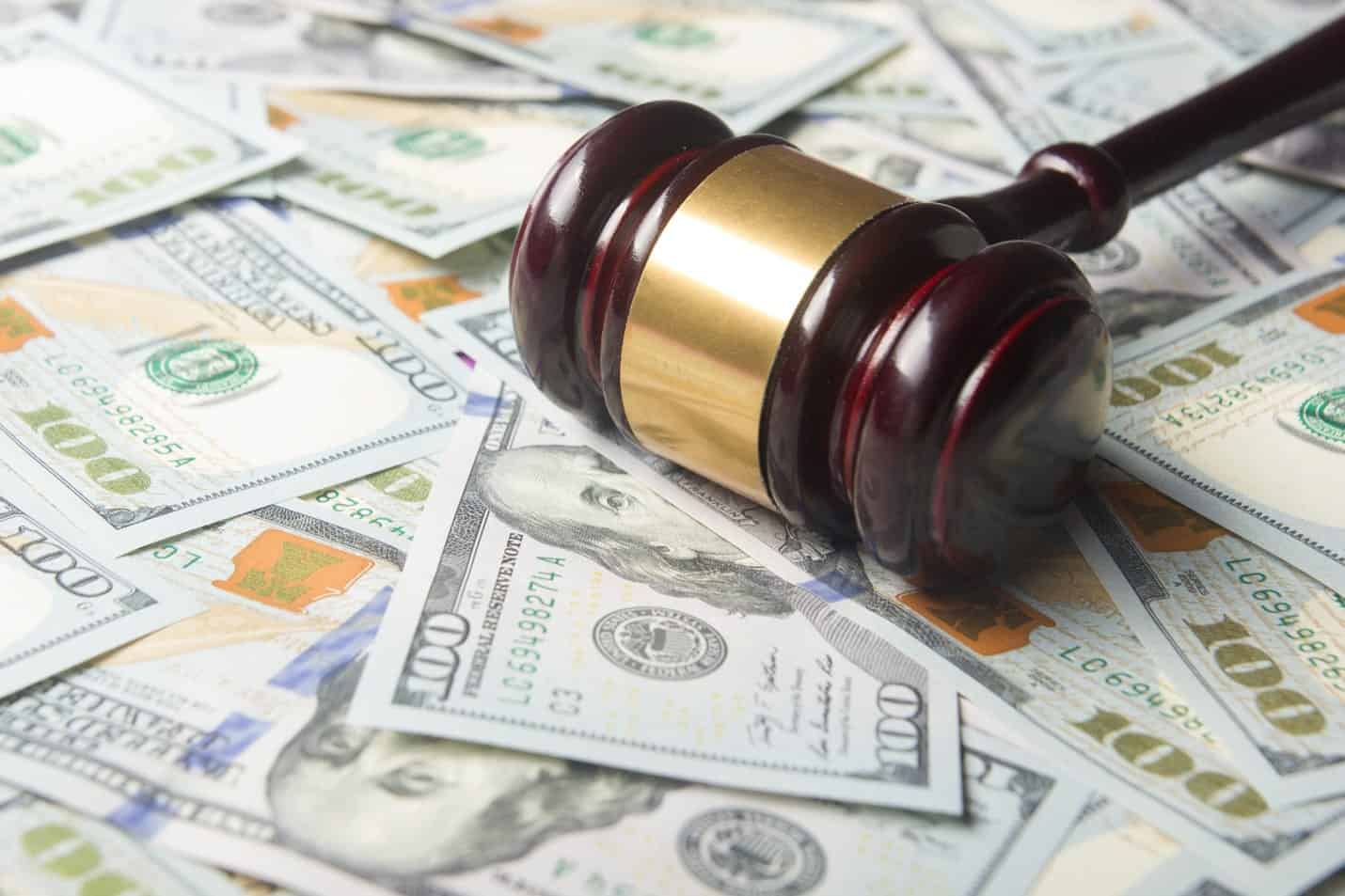Dealing with securities by trading or investing is an integral part of today’s financial system. From banks to mutual funds, today’s financial institutions play a vital role in providing essential services to society, such as offering mortgages and administering pension funds. However, not every company has been known to run its business strictly in accordance with the law. History has shown that, at times, companies break the law, and have to pay significant fines for their wrongdoings. In this article, we will take a look at who paid significant criminal fines and why. In particular, we will be paying attention to financial crimes and listing five of the largest financial criminal fines in history. The list will contain the name of the punished entity and the fine it received.

1. Michael Milken, $600 million
Michael Milken was nicknamed the “Junk Bond King” for creating the junk bond market in the 1980s. He joined Drexel Burnham Lambert in 1969 and started trading high-yield bonds during his time with the company. These bonds had unusually high yields because the originators, who were in desperate need of capital, were often distressed and had trouble accessing the much-needed funding. Milken managed to raise vast amounts of money from large investors. Later, he managed to expand his department significantly and was earning between $200 million and $550 million per year at the height of his career.
However, this turned sour when an ongoing investigation was launched on racketeering and insider trading violations. Eventually, a deal was reached, where Milken pleaded guilty to five technical counts of violating securities laws. He was sentenced to 10 years in prison and was ordered to pay a $600 million criminal fine. If he had also been found guilty of racketeering, he would have faced a much heftier sentence of 20 years in prison and would have had to forfeit most of his wealth. However, after the verdict, he was a free man within two years, being released for good behaviour. He spent his time repairing his image and eventually gained a pardon from President Trump.
2. SAC Capital Management, $900 million
SAC Capital Management, founded by Steven A Cohen, was one of the most successful hedge funds before pleading guilty to insider trading in 2013. The fund had assets under management of around $15 billion prior to the indictment, and half of those assets belonged to Cohen and his employees. In the face of accumulating evidence, the company agreed to plead guilty and was ordered to pay $900 million in criminal fines and forfeit another $900 million to the federal government. Most of the money came from the founder Steven A Cohen rather than outside investors. SAC Capital Management was later converted into the Point72 Asset Management family office in 2014 and has recorded a good performance in recent years.
3. JP Morgan, $1.7 billion (the Bernie Madoff scandal)
Bernie Madoff started his company, Bernard L. Madoff Investment Securities LLC, in 1960, at the age of 22. He started trading penny stocks using his savings from working as a lifeguard. He soon persuaded his family members to invest money with him; however, he had to be bailed out by his father-in-law after his investments went sour.
Success came later on as he and his partner started exploring Artificial Intelligence capabilities and attracted significant attention from Wall Street for the insights into the market activity that the technology provided. By the late 1980s, Madoff was making around $100 million a year, and he would later even serve as a member of Nasdaq.
Despite his early success and contributions to the financial markets, Bernie Madoff is the face of financial scam schemes in the modern world. By some accounts, he was engaged in securities fraud as early as the 1970s, scamming billions of dollars from unsuspecting investors. Madoff’s scheme involved promising higher than average returns for investors and using new investors’ money to pay out the existing investors – a well-known mechanism of financial fraud known as a Ponzi scheme. The scheme has affected more than 37,000 people, with as much as $65 billion lost. It was one of the biggest scams in history. Madoff was eventually unable to sustain his fraud, and in 2009 he was sentenced to 150 years in prison and forced to forfeit $170 billion. He died in prison in 2021, at the age of 82.
The party involved was JP Morgan, a bank charged with two felony violations of the Bank Secrecy Act in connection with the Bank’s relationship with Bernard L. Madoff Investment Securities. JP Morgan was ordered to pay $1.7 billion in fines because it failed to report on critical issues surrounding the Ponzi scheme that could have helped stop the scheme earlier.

4. Allianz, $2.3 billion
Allianz is a German multinational financial services company headquartered in Munich. Its core business, the asset management unit, has recently been in the spotlight. On May 17th 2022, the company agreed to plead guilty to financial fraud and will have to pay $2.3 billion in criminal charges. Allianz will be fined a total of $6 billion when restitution and other fees are taken into account.
The company marketed and sold its “Structured Alpha” options trading strategy to pension funds which, in turn, adversely affected individuals. As it turns out, the company “manipulated numerous financial reports and other information provided to investors to conceal the magnitude of Structured Alpha’s true risk and the funds’ actual performance”, as noted by the SEC. In some cases, the risk portrayed was half that of the actual risk, whereas in other cases, the risk described was one-tenth of the true threat.
Due to the guilty plea, Allianz is forbidden from providing advisory services to US investment management firms for the next ten years.
5. Major US Banks, tens of billions of dollars (The Financial Crisis of 2008)
The financial crisis of 2008 has left a significant mark on the world’s economy. Originating in the US, it was caused by reckless mortgage lending practices that later proved to be extremely costly for the US economy. The housing bubble before the crisis was fuelled by the sale of Mortgage-Backed Securities (MBS) and Collateralized Debt Obligations (CDOs) that offered attractive rates and had good risk ratings from rating agencies. These securities were created and sold by major investment banks such as Goldman Sachs, JP Morgan, Citigroup, and others to investors worldwide. As housing prices turned sour, many of these securities turned out to be not so safe, as rising payment default rates by borrowers meant they were losing a significant portion of their value.
Many prominent economists point to the creation and the sale of mortgage-backed securities when trying to find the culprit for the 2008 financial crisis and the ensuing Great Recession. A significant number of financial institutions leveraged their balance sheets and later found these assets falling in value, putting them at great financial risk. As the risks of financial contagion grew, the US government had to bail out several high-profile institutions such as Fannie Mae and Freddie Mac to keep the financial system in order. As regular tax-earners were the ones financing the bailouts, the Department of Justice (DOJ) took on the task of finding those responsible for the financial crisis of 2008.
Since the financial crisis of 2008, the DOJ has since fined several major banks tens of billions of dollars in fines relating to the creation and the sale of toxic mortgage-backed securities. One such example is the $16.65 billion total fine against the Bank of America in 2014. Another is a $13 billion fine against JP Morgan in 2013. Numerous such examples depict the sometimes-gloomy picture of the investment landscape.

Conclusion
While most businesses and financial companies go about their business in legal ways, one cannot ignore the fact that since the year 2000, US banks alone have racked up fines and penalties of over $200 billion. While various fraudulent schemes and the underestimation of risk can be difficult to avoid for a regular person, the failings of the institutions provide a warning for those wanting to trade their own money. Hopefully, understanding that even a well-known company can be involved in some kind of financial fraud can help you stay away from entities that are relatively obscure or offer something too good to be true.